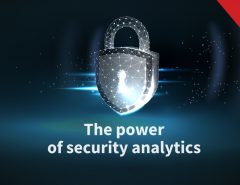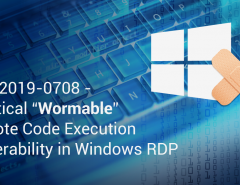According to Gartner’s Top 7 Security and Risk Trends 2019 report, a renewed interest towards excelling Security Operation Centres (SOCs) has been considered as among the top two new trends of the year.
The evolution of the Security Operations Centre
Generally, a Security Operations Centre refers to the information security unit within an enterprise, tasked with the responsibility of looking after the organization’s security posture. As per the Gartner report, there is a growing trend towards building or developing SOCs in a manner that is more in tune with the demands of the current era.
Threat prevention was the key outlook for enterprises in the past but the increasing velocity and business impact of modern-day threats have prompted a change in approach. Enterprises are now gradually moving towards threat detection and response. It is this change which has prompted the move towards implementing SOCs with integrated incident response, threat hunting among other features.
As per the Gartner report, “By 2022, 50% of all SOCs will transform into modern SOCs with integrated incident response, threat intelligence and threat hunting capabilities, up from less than 10% in 2015.”
The key pointers that encapsulate this trend are:
A balanced approach
In the last decade, enterprises have been regularly exposed to cyber threats of different variants. The key reason behind these multiple breaches has been a lack of preparation leading to avoidable downtimes. Now enterprises are recognizing the importance of maintaining an appropriate balance of threat prevention and detection in their security approach. This type of approach enables enterprises to invest in solutions like endpoint detection and response.
The tradeoff between advanced detection and higher skillsets
Modern and optimized SOCs use tools which detect threats which can elude traditional perimeter defences. While this is positive, these tools are also far more advanced and hence generate more alerts. Leveraging these advanced tools properly and applying the data they generate for better protection requires cybersecurity employees with higher skillsets. That is a tradeoff which enterprises must make for better security.
Moving from SIEM to SOC
Most organizations use Security Information and Event Management (SIEM) software for real-time analysis of security alerts. However, SIEM solutions do not often provide sophisticated detection and response in today’s complex environments. Enterprises must make the move from SIEM to SOC to improve their threat intelligence, consolidation of alerts and effectively respond to attacks.
Insource or outsource the Security Operations Centre
A key decision that enterprises must make is whether they want to build their own SOCs internally or outsource it to external vendors. There are pros and cons to both the decisions – if an enterprise only has a few incidents per year, it may not justify the need for a full-fledged SOC. However, for organizations that may be at greater risk, it makes sense to outsource to an external vendor with greater resources and expertise. Even in this case, the enterprise must ensure that accountability is not lost and business-centric security activities still remain in control of the enterprise.
Seqrite provides a range of enterprise security solutions providing protection across all aspects of the enterprise. Whether it’s endpoint security, cloud security or Enterprise Mobility Management, Seqrite offers the protection modern-day enterprises require to conduct business while staying safe from cyber threats.




